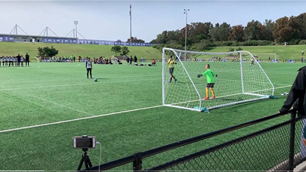There are few benefits to more players in an A-League squad...
The idea of removing the restriction on the number of players A-League clubs can sign has been raised this week, whilst it would open the door to professional football for more players a closer look at the potential upside of doing so reveals few benefits.
As with any decision on the rules that govern A-League clubs the overriding factor must be the advancement of the sport. This could take many forms, be it to attract more revenue, improve the playing standard or to develop stronger ties with the community. The idea of removing the cap on the number of players that can be signed by A-League clubs has little prospect of doing any of these.
The current restrictions limit the number of players a club can sign to 23 with a further three youth team players able to be signed to full-time base salary contracts, who are not included in the 23 or in the salary cap. The obvious idea behind doing away with the playing squad limit is to give more players the opportunity to play in the A-League. In Monday's Sydney Morning Herald Sebastian Hassett said it would allow clubs who have one spot left on their roster but a considerable amount left in the salary cap to bring in more than one player. Hassett went on to suggest that it could remove the reluctance some A-League clubs have in giving an opportunity to State League players despite the success of many recruited from state competitions.
These are some of the positives that could come out of removing squad restrictions. However, with many currently not utilising their full quota of players there is little to suggest A-League clubs would be any more likely to do so if given the opportunity, and the benefits of doing so unlikely to encourage them. Under the current rules if clubs do sign the full quota of players permitted there are eight players not involved in the squad every match, if they have the permitted three youth players on full-time first team contracts they would have 11 players sat in the stand. The numbers are obviously high and the need to bring in more players seems non-existent.
Whilst many clubs in Europe and Asia have around 30 players on their books the shorter A-League season means demands on the playing squad are less, making the likelihood of utilising a squad of this size extremely low. There is also the risk of reducing the chances of Youth Team players being called up to the first team as it would take one all mighty injury crisis for them to get their A-League chance. This could dramatically reduce the effectiveness of the National Youth League as if clubs were unlikely to have to call on these players it would make it less important to ensure they are ready to step-up to the A-League.
With some A-League clubs under financial strain the likelihood of the salary cap increasing along with squad sizes appears remote. This would mean that clubs would still be operating within the same financial restraints making it unlikely that they would be able to attract the quality players needed to improve the playing standard.
The effect of having bigger squads could actually be detrimental to improving the playing standard. With a squad of thirty players the ability of the coach to spend time developing individuals would be reduced due to the sheer number of players under their care. Some may suggest that squads could be split in two for training but this is far from ideal as it more often than not would deny the squad's youngest players the chance to learn from the more experienced players on a day-to-day basis. Coaches would also be unable to call-in youth team players for training, which is often the case currently when numbers permit it, as they would only add to a very crowded training pitch. This would rob many young players of the vital development opportunity of training with first team players.
The notion of getting more players into professional football is a worthwhile one. However, removing the restriction on the number of players a club can sign is not the answer and will not benefit the development of Australian football. The key is making the A-League as good as possible by ensuring the best young talent are able to progress, not getting as many players as possible into the competition. It's a case where less is definitely more.
Follow me on Twitter @beaubusch
Related Articles

Fresh talent flock to ambitious A-League outfit's pro pathway

Why A-League 20/21 is crucial for Olyroos’ medal hopes













